|
|
|
|
Products mentioned in this Article
--None--
|
|
|
|
|
|
|
|
|
 |
|
|
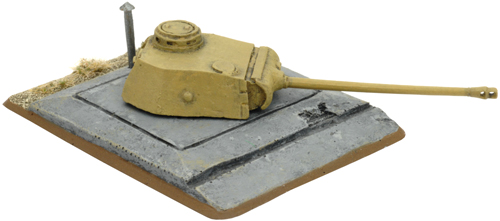 |
Pantherturm I (GE680)
with one Panther turret and turret base plate.
By 1943 the concept of utilising tank turrets in fixed fortified positions had become standard practice within the German Army. Generally the turrets used for these purposes were either from captured enemy tanks or obsolete designs. |
|
Using such turrets, especially those that were obsolete meant the turret itself was under gunned and offered poor armour protection; therefore posing little threat to the Allied tanks facing them.
This product is no longer currently available for sale...
|
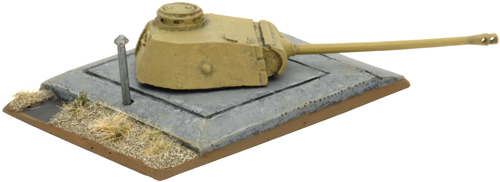 |
| "Like their historical counterparts, it is best to deploy a Pantherturm in a position with excellent fields of fire and with enough support nearby so your turret is not easily exposed by enemy forces." |
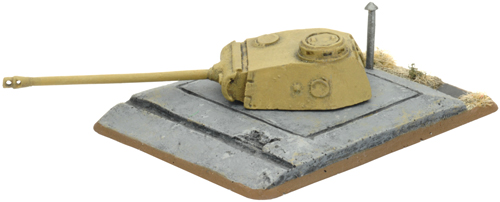 |
In October 1943, the Germans had a radical change in philosophy toward the tank turrets being used. It was decided that the Panther turret with its excellent armour protection and outstanding 7.5cm KwK42 L/70 gun would be employed for this purpose.
Read the Cassino Design Notes here... |
The change was thought to be radical due to the fact that the Panther was still in production and was at the time Germany’s premier medium battle tank.
Learn more about Infantry Aces here... |
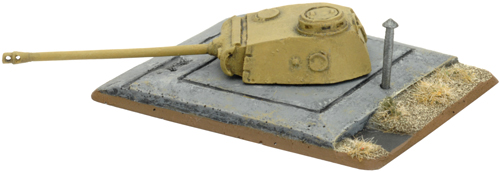 |
| “The Pantherturm has the frontal armour (Front 10) to absorb punishment from nearly any enemy gun on the battlefield.” |
 |
Manned by a specially trained crew of three; a commander, loader and gunner the Panther turrets were employed as part of the fortified positions known as the Hitler Line overlooking the Liri Valley during the Cassino campaign. |
Positioned with long fields of fire, the Panther turrets were flanked by towed Anti-tank guns and machine-guns to protect the vulnerable areas of each turret.
Take a sneak peek at some of the upcoming Cassino releases here... |
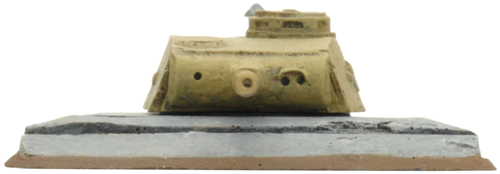 |
| "The 7.5cm KwK42 L/70 was a formidable weapon on the battlefields of World War Two. Its ability to penetrate armour (Anti-tank 14) was legendary; no Allied tanker felt safe when facing this fearsome weapon." |
| The Pantherturm in Flames Of War |
| |
|
Armour |
|
|
|
| Turret |
Mobility
|
Front
|
Side
|
Top
|
Equipment and Notes
|
Weapon
|
Range
|
ROF
|
Anti-tank
|
Firepower
|
|
| Panther Turret |
Bunker |
10 |
5 |
1 |
Turret Bunker MG. |
7.5cm KwK42 gun
|
32"/80cm
|
2
|
14
|
3+
|
|
| Turret Bunker MG |
16"/40cm |
4 |
2 |
6 |
Cannot fire if the main gun fires, ROF 2 when Pinned Down. |
|
 |
The Panther turrets proved to be a formidable opponent for the Allied tank crews; while the Hitler Line had been breached by the end of May 1944, the toll extracted from the Allied tank units involved in the fight was high. |
| "Pantherturms can be fielded by using the Cassino, the army organisation diagram must contain the Cassino Fortification options." |
| The successful deployment of Panther turrets on the Hitler Line led to the deployment of turrets on other fronts; including the Eastern Front in an attempt to stem the tide of the Red Army's advance towards the German homeland. |
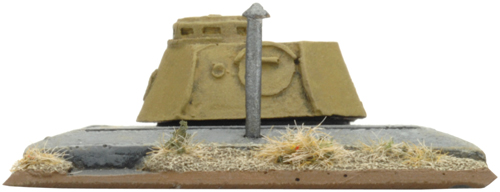 |
"Tank turrets do not have firing slits. The only way to put them out of action is to penetrate their armour."
If a weapon hits a Turret, the owning player must take an Armoured Vehicle Save (see page 69 of the rulebook) as if it were a Tank team. As a Turret has no hull, whether shots hit the Front or Side Armour is determined solely on the turret facing.
If the Turret is Bailed Out, it remains so until the owning player’s Starting Step when it automatically Remounts. |
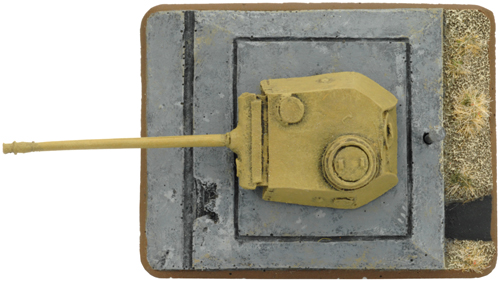 |
During the final months of the war, Panther turrets often consisted of disabled Panther tanks that were moved into a pit to prove a hull down position and the soil back-filled around the tank to create a fortified position.
Panther Turret designed by Evan Allen
Base designed by James Brown
Painted by Mike Haught
|
Last Updated On Monday, February 25, 2019
|
|
|